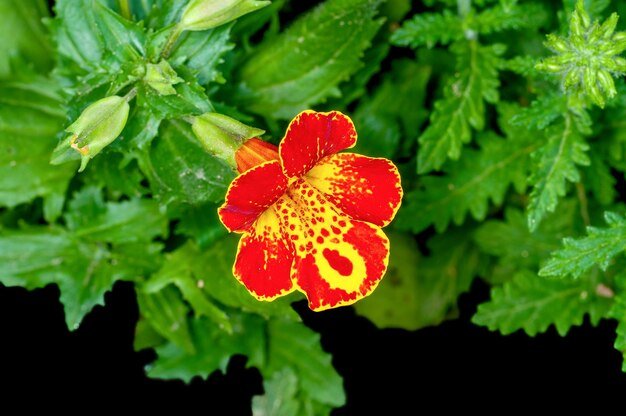When you observe a beautiful geranium blooming in a garden or pot, you may wonder what kind of plant it is in terms of its botanical classification. One of the common questions that arise is, “Is a geranium a dicot?” To fully understand the answer, it’s essential to explore the concept of plant classification, especially between dicots and monocots, and see where the geranium fits in.
In this comprehensive guide, we will dive into what dicots are, explore the characteristics of geraniums, and determine if geraniums belong to the dicot category. By the end of this article, you’ll have a thorough understanding of the classification of geraniums and how they compare to other plants.
What Does “Dicot” Mean?
Before addressing the question of whether geraniums are dicots, it’s essential to understand what a dicot is. “Dicot” is short for “dicotyledon,” which refers to a group of flowering plants that typically have two seed leaves, or cotyledons, in the seed. Cotyledons are the first leaves that appear during seed germination and play a crucial role in the early development of the plant.
Key Characteristics of Dicots:
- Two Cotyledons: As mentioned, dicots typically have two seed leaves.
- Leaf Venation: The leaves of dicots usually have a reticulate or net-like venation pattern, where the veins form a branching pattern.
- Vascular Bundles: In dicots, the vascular tissue, responsible for transporting water, nutrients, and sugars, is arranged in a circular pattern within the stem.
- Flower Parts: Dicots often have floral parts (petals, sepals, etc.) that appear in multiples of four or five.
- Secondary Growth: Many dicots, especially trees and shrubs, show secondary growth, meaning their stems increase in diameter as they age due to the presence of vascular cambium.
Monocots vs. Dicots: A Quick Comparison
To better understand the distinction between monocots and dicots, let’s explore the key differences between them.
| Feature | Dicots | Monocots |
| Cotyledons | Two cotyledons | One cotyledon |
| Leaf Venation | Reticulate (net-like) venation | Parallel venation |
| Vascular Bundles | Vascular bundles in a ring | Vascular bundles scattered in stem |
| Flower Petals | Multiples of 4 or 5 | Multiples of 3 |
| Secondary Growth | Present in many species (e.g., trees) | Typically absent |
Now that we understand what dicots are, let’s see how the geranium fits into this classification.
What Are Geraniums?
Geraniums are a genus of plants known for their attractive flowers, which are commonly grown as ornamental plants in gardens and landscapes. The term “geranium” is often used to refer to a wide variety of species in the Geranium genus, which includes both perennial and annual plants. These plants belong to the family Geraniaceae.
The genus Geranium is not to be confused with “pelargonium,” which is a related but different genus often referred to as geraniums in the gardening world. Pelargonium species are typically grown as houseplants, while true geraniums are hardy perennials that are more commonly found in garden settings.
Key Features of Geraniums
- Flowers: Geranium flowers are usually five-petaled and come in a variety of colors, including purple, pink, white, and red.
- Leaves: The leaves are typically palmate (hand-shaped), and they have a serrated edge. The leaves are often fragrant when crushed, with a slightly spicy scent.
- Growth Habit: Geraniums can grow as groundcovers, small shrubs, or herbaceous perennials. They are often low-maintenance and easy to grow, making them popular among gardeners.
- Habitat: Geraniums thrive in temperate climates, with some species preferring more shaded areas while others do well in sunny locations.
Is a Geranium a Dicot?
Now, to answer the primary question: Is a geranium a dicot?
Yes, geraniums are dicots. This classification can be confirmed through several key characteristics that align with the defining traits of dicot plants:
- Two Cotyledons: As with other dicots, geranium seeds have two cotyledons.
- Leaf Venation: Geranium leaves exhibit a reticulate venation pattern, typical of dicots.
- Vascular Bundles: The vascular bundles in geranium stems are arranged in a circular pattern, another distinguishing feature of dicots.
- Flower Parts: Geranium flowers typically have five petals, which is consistent with the dicot characteristic of flower parts in multiples of four or five.
Given these traits, geraniums clearly belong to the dicot category of plants. This classification places them in a broad group of plants that are known for having a wide variety of characteristics and play an important role in the plant kingdom.
Why Is This Classification Important?
Knowing whether a plant is a dicot or a monocot is important for several reasons:
- Identification: Understanding the key characteristics of dicots and monocots can help gardeners, botanists, and horticulturists identify plants more easily.
- Cultivation Practices: The classification can provide insight into the care needs of plants, such as the appropriate watering, fertilization, and pruning methods.
- Ecological Role: Dicots and monocots have different ecological roles in their native environments, contributing to biodiversity in various ecosystems.
Other Common Dicot Plants
Geraniums are far from the only dicot plants. In fact, many common flowering plants belong to this category. Here are a few examples of well-known dicots:
- Roses (Rosa spp.)
- Sunflowers (Helianthus spp.)
- Peas (Pisum sativum)
- Tomatoes (Solanum lycopersicum)
- Daisies (Bellis perennis)
- Lilacs (Syringa vulgaris)
All of these plants share the typical characteristics of dicots, such as two cotyledons, net-like leaf venation, and vascular bundles in a ring.
The Role of Geraniums in Gardens and Landscaping
Geraniums, with their attractive flowers and easy-care nature, are a favorite in gardens and landscaping projects. As dicots, they offer several advantages to gardeners:
- Hardiness: Geraniums are relatively hardy plants, often tolerating a wide range of growing conditions.
- Aesthetic Appeal: Their bright flowers can add color and vibrancy to any garden, making them popular choices for decorative plantings.
- Low Maintenance: Once established, geraniums require minimal care, making them suitable for beginner gardeners and experienced horticulturists alike.
- Wildlife Support: Geraniums can attract beneficial pollinators like bees and butterflies, helping to support local ecosystems.
Conclusion
So, is a geranium a dicot? The answer is yes! Geraniums are classified as dicots, sharing key features such as two cotyledons, reticulate leaf venation, and flower parts in multiples of five. Understanding this classification not only helps you better appreciate the biology of geraniums but also enables you to care for them more effectively in your garden.
By recognizing the differences between dicots and monocots, you gain valuable insights into plant biology that can be applied to a wide range of gardening and botanical endeavors. Whether you’re a seasoned gardener or a beginner. Knowing about geraniums and their classification enhances your knowledge of the plant kingdom and aids in making informed choices about plant care.

